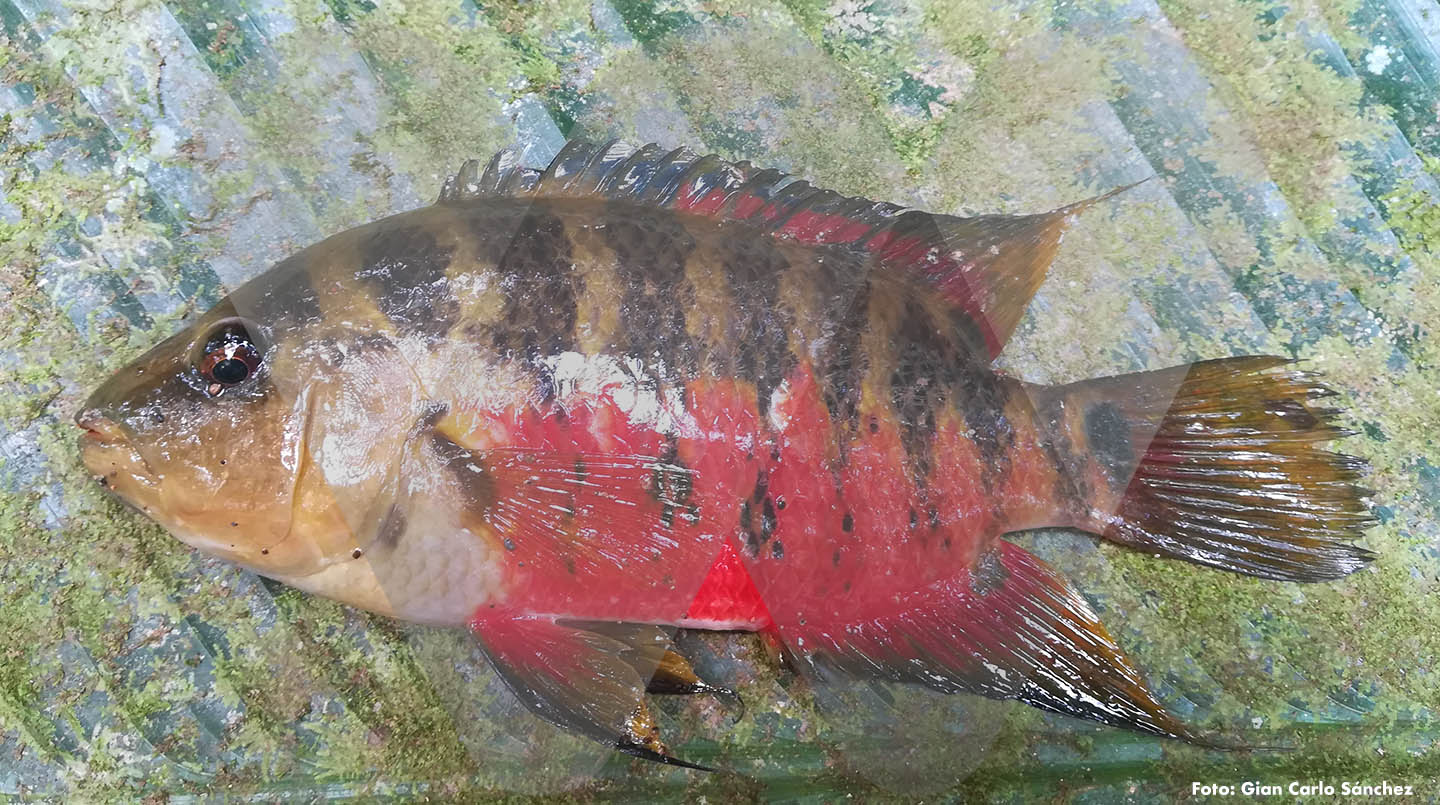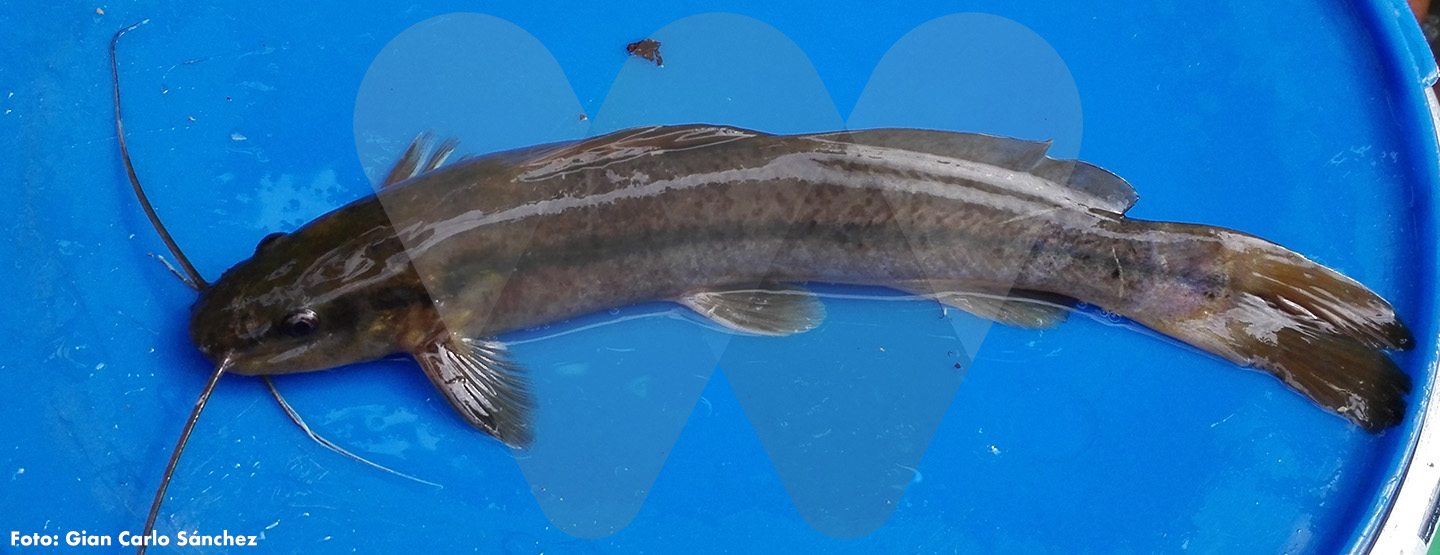Freshwater Fish Also Demand Sustainability
 Mojarra - Mesoheros atromaculatu
Mojarra - Mesoheros atromaculatu
During the characterization carried out in a sector of the DRMI (Regional Integrated Management District) El Encanto de los Manglares del Bajo Baudó (Chocó), it was found that the freshwater habitats supporting fish populations remain in good condition, although some populations have declined due to inappropriate fishing practices.
In Bajo Baudó (Chocó), the rivers are home to an as-yet-undetermined number of freshwater fish species. Scientists acknowledge that this region has been little studied, so much of the knowledge about these organisms has often been strengthened through community testimonies and the experiences of local fishermen.
However, the story changed—at least partially—with the “Participatory Characterization of Conservation Targets of the Regional Integrated Management District El Encanto de los Manglares del Bajo Baudó,” conducted within the Concosta Community Council. This activity, developed by WCS Colombia, Concosta, and Codechocó, opened a chapter for studying freshwater fish—also known as dulceacuícolas—a group of great value for the livelihoods of riverine populations.
During a study lasting just over two weeks, Gian Carlo Sánchez, Environmental Administrator from Universidad Autónoma de Occidente, identified 36 species belonging to 14 orders and 22 families. Of these, seven are amphidromous—a term describing species whose adults live and reproduce in freshwater, but whose larvae develop in coastal areas before migrating upstream as post-larvae to streams and river zones free from salinity influence, where substrate and habitats are optimal for growth and maturity. Additionally, seven marine-estuarine species were recorded; these tolerate salinity changes and inhabit mainly the lower river zones.
Some species reported in the region but not recorded during this initial characterization include sardines from the genera Argopleura, Astyanax, Creagrutus, and Gephyrocharax, the nayón (Pseudocurimata lineopunctata), the jorobadas (Roeboides occidentalis), and the pechonas (Gasteropelecus maculatus), the latter being of interest in the ornamental fish trade due to its distinctive appearance. Other species recognized by local fishermen but not captured during this study include the capitán (Batrochoglanis trasmontanus), the viringo pintado (Gymnotus choco), musungá, the aguja (Strongylura cf. scapularis), and the quicharo (Hoplias malabaricus).
To carry out the research and obtain these preliminary data, Gian Carlo and local assistants used various capture methods in the main channel beaches of the Capiro River and several tributaries such as the Bacao, Chigorodó, Dioselina, and Teteral streams, as well as the Gemías stream, a tributary of the Hijuá River. Leading the study for WCS Colombia, Gian Carlo relied not only on traditional fishing methods like chinchorro nets, cast nets, and gillnets but also on underwater observations to identify cryptic and small-sized species. Additionally, conversations with local inhabitants helped approximate the use and local perceptions of this resource.
Polluted Rivers
“In general, the evaluated water bodies maintain good quality both in the water resource itself and in the structure of their riparian forests, which ensures ecological integrity for the fish. However, activities related to timber extraction in some streams show negative impacts, such as the accumulation of logs or loss of connectivity with the rivers. This is a consequence of the high load of vegetal material and sediments at the river mouths,” concluded the researcher.
 Mungulí - Eleotris picta
Mungulí - Eleotris picta
Similarly, Gian Carlo was able to establish that 10 species of freshwater fish are used for subsistence, and their consumption is closely linked to the seasonality of the harvests. “Residents of the lower zone go to farms located along the rivers to work and take advantage of the opportunity to fish, mainly using nets placed at the mouths of streams and in deep pools.”
This activity has shown challenges, as conflicts related to resource use have been confirmed. Locals report a noticeable decrease in fish sizes. Fish populations that were once abundant, they explain, have declined partly because members of communities from outside the territory living in the upper zones use native toxic plants for fishing (barbasco), which affect small-sized specimens and, incidentally, poison the water bodies.
“The freshwater fish characterization activity met most of the expectations, considering that the Bajo Baudó region has significant gaps in knowledge regarding the diversity of these animals in the continental zone. I must highlight that the result of 36 species surpasses records from nearby areas such as Cubarradó (23 species), Jurubirá (16), Valle (21), and Juradó (9), and represents 68.4% of what has been reported for the entire Baudó basin,” the researcher concludes in the analysis.
 Barbudo - Rhamdia guatemalensis
Barbudo - Rhamdia guatemalensis
However, he adds that progress is needed in the sustainability and proper use of the resource, since the relationship between local communities and the fish and rivers or streams in the region could foster strategies not only for conservation but also for management that are adapted to the territory’s reality. There is subsistence fishing use that deserves to be sustained over time.